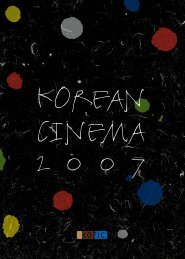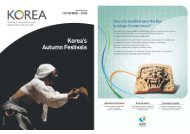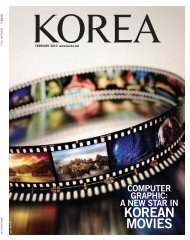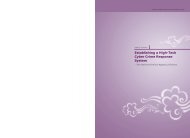HELLO from KOREA
Hello-Eng(3.3) - Korea.net
Hello-Eng(3.3) - Korea.net
- No tags were found...
Create successful ePaper yourself
Turn your PDF publications into a flip-book with our unique Google optimized e-Paper software.
was dominant during the Three Kingdoms period. Three pagodas stand in<br />
a line going east to west, each with its own hall, therefore called the onehall<br />
per-pagoda style. There were also two-pagoda and three-pagoda<br />
structures. Bulguksa is one of the most beautiful of the temples built in<br />
the Unified Silla period.<br />
The woodwork of these temples was often painted in patterns of flaming<br />
colors, called dancheong, a technique still practiced today. Used in<br />
traditional motifs and symbols, each color is supposed to have its own<br />
meaning: blue=spring, red=summer, white=autumn, black=winter, yellow=the<br />
changing of seasons, and reddish brown=harmony.<br />
Of course, people didn't live in these temples, and the typical house<br />
that Korean farmers lived in, dating back to the Joseon Dynasty, was<br />
quite different. Always single story, these farmers' homes had thatched<br />
roofs and clay walls, and were usually built in an L- or U-shape around<br />
an open courtyard.<br />
53 _ Culture<br />
Did You Know?<br />
Traditional Korean<br />
houses have long had central<br />
heating. The kitchen stove<br />
was connected to vents<br />
underneath the floor of the<br />
main room (or rooms),<br />
which radiated heat up<br />
through the floor. This<br />
made it comfortable to sleep<br />
and sit on cushions or mattresses<br />
on the floor. Heated<br />
floors, or ondol, are still the<br />
way in which Korean homes<br />
are heated, although now<br />
they use water pipes heated by gas<br />
or electricity, instead of firewood.
















